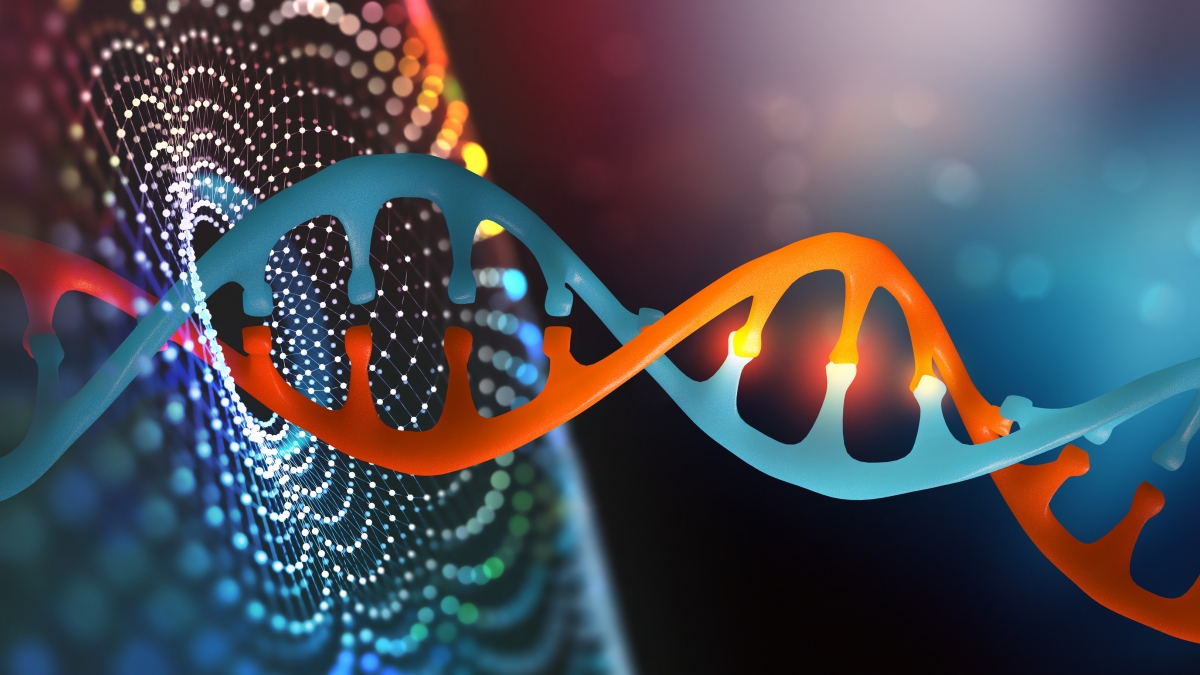Biodesign Institute receives $3M NSF grant to develop DNA-enabled nanoelectronics

A new generation of ultratiny electronics is being designed with the help of DNA nanotechnology. Photo courtesy Shutterstock
For decades, the semiconductor industry has relied on decreasing transistor size to increase computing power. However, physical constraints in the manufacturing process have limited further size reductions and the overall density of electronic components.
With the aim to overcome these limitations, a team of researchers led by Arizona State University's Joshua Hihath has been awarded a $3 million grant by the National Science Foundation (NSF) to develop a new manufacturing process that uses DNA to create ultrahigh-density nanoelectronic systems, leveraging DNA nanotechnology and synthetic biology to create a new generation of useful electronic applications at the molecular scale.
The four-year project will explore this new approach using DNA nanostructures as a scaffold to organize nanoelectronic components like carbon nanotubes, nanoparticles and single molecules.
By integrating these nanoscale parts with conventional silicon-based circuits, the researchers hope to achieve extremely high densities in hybrid electronic systems.
“Nanoscale and carbon-based electronic devices can provide functionality that is difficult to duplicate in conventional semiconductors,” Hihath, director of the Biodesign Center for Bioelectronics and Biosensors and professor with ASU's School of Electrical, Computer and Energy Engineering, says. “Yet, it has been very difficult to integrate these nanodevices into useful electronic circuits. DNA nanotechnology provides an exciting platform for integrating these devices with conventional electronics, with resolutions that are far better than what can be achieved with conventional lithography.”
Hihath is the principal investigator (PI) for the new grant and is joined by co-PI Sule Ozev, a fellow School of Electrical, Computer and Energy Engineering professor, and Peter Wiktor from the Biodesign Institute. Additional team members include co-PIs from the University of Washington (M.P. Anantram), Emory University (Yonggang Ke) and California State University, Chico (Meghdad Hajimorad). Rachna Nath from Arizona College Prep High School will also be involved in the outreach activities.
The grant is funded through the NSF’s Future Manufacturing program, which “supports fundamental research and education of a future workforce to overcome scientific, technological, educational, economic and social barriers in order to catalyze new manufacturing capabilities that do not exist today.”
Horizon of new electronics
DNA nanotechnology provides an incredibly versatile toolkit to design and self-assemble complex nanostructures with unique electronic properties. The team hopes to create “plug-and-play” DNA "nano-cartridges" that can be manufactured separately using bottom-up techniques of self-assembly, then integrate these with traditional top-down silicon fabrication processes. The resulting entities will have versatile properties for a broad range of electronics at an unprecedentedly tiny scale.
An important part of this project is figuring out how to self-assemble highly pure, tiny tubes of carbon, called carbon nanotubes, with functional single-molecule devices in a way that allows them to conduct electricity in a controllable manner. These carbon nanotube-based molecular junctions will form the basis of the electronic devices.
The researchers will then focus on joining these molecular devices together in particular ways to create complex 3D structures using DNA that's been folded into specific shapes, much like origami. The method uses the base-pairing properties of the four nucleotides of DNA that can snap together like Lego pieces. Computer tools and simulations are used to guide the self-assembly process.
Innovative biosensors
An initial target application is manufacturing a new class of inexpensive, highly sensitive and selective biosensors for detecting hundreds of specific biomolecules simultaneously. Such sensors could transform medical diagnostics, food safety monitoring and biodefense. However, the modular and reprogrammable nature of the platform lends itself to diverse nanoelectronic systems in the future.
The convergence of DNA nanotech, synthetic biology and nanoelectronics heralds a new era in manufacturable molecular-scale electronics. The advances enabled by the new grant will help establish scalable design principles and processes that others can build upon, allowing rapid innovation in this field.
Students join in pathbreaking research
The new NSF grant will also focus on creating a diverse, inclusive workforce capable of furthering this nascent field. The project will involve two Hispanic-Serving Institutions and aims to prepare students from diverse educational backgrounds for careers in nanotechnology. It aims to introduce this new area to students in high schools, community colleges, four-year colleges and research universities as part of its comprehensive workforce development plan.
In addition to workforce development, the grant includes a significant outreach program designed to increase enrollment of underrepresented groups in STEM fields. Activities include mentoring high school and undergraduate students in summer research experiences, providing teacher training and introducing K–12 students to cutting-edge science through school visits.
“Today, technology is changing the workplace and the manufacturing process at an incredible rate, so it’s critical to find ways to introduce students to emerging areas as early as possible,” Hihath says.
The project unites experts in chemistry, biochemistry, materials science, electrical engineering, physics, computer science and education. Collaborators bring synergistic capabilities in nanofabrication, DNA origami design, carbon nanotube chemistry, single-molecule electronics, circuit design, control systems and electronic simulations.
More Science and technology

ASU researcher part of team discovering ways to fight drug-resistant bacteria
A new study published in the Science Advances journal featuring Arizona State University researchers has found…

ASU student researchers get early, hands-on experience in engineering research
Using computer science to aid endangered species reintroduction, enhance software engineering education and improve semiconductor…

ASU professor honored with prestigious award for being a cybersecurity trailblazer
At first, he thought it was a drill.On Sept. 11, 2001, Gail-Joon Ahn sat in a conference room in Fort Meade, Maryland.…
